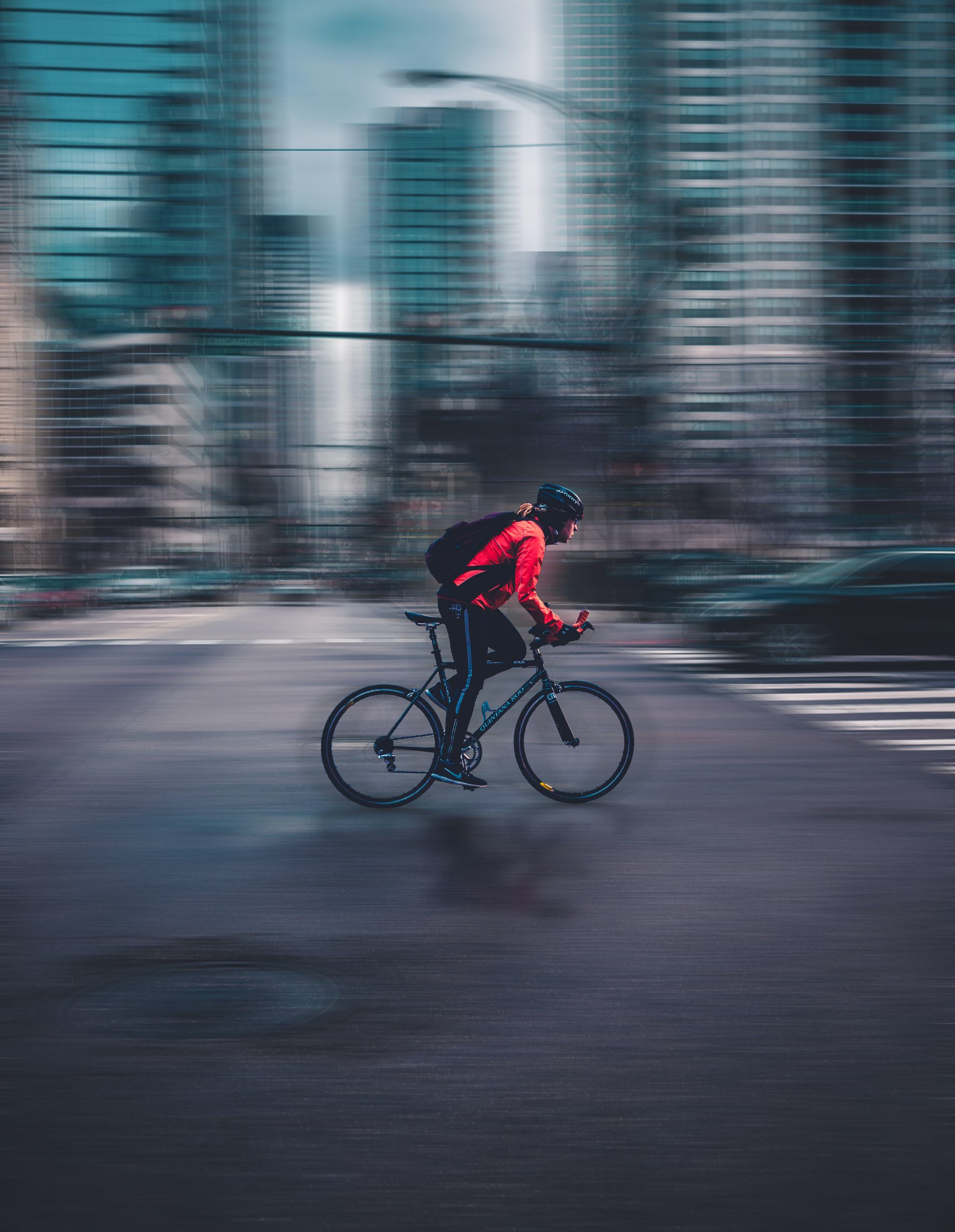Road Cycling Safety
Written by Cooper & Friedman PLLC on July 23, 2020

Road cycling can be a great way to get some exercise, explore a city, or commute. However, it can be dangerous as well, especially when sharing the road with cars. In 2018, there were 857 road deaths in the United States, a 6% increase from 2017. Fortunately, there are a few things you can do to significantly increase safety as a road cyclist. Here’s what you need to know:
Laws and Regulations
Before you get out on the road, you should always become familiar with the state and local cycling laws in your area. You can think of these as the foundation of your safety plan. Let’s look at Kentucky and Louisville laws as an example of what some of these rules and regulations might be.
In Kentucky, cyclists are required to use front riding lights and a steady or flashing red light when it’s night time or darker than usual. They must also use red rear reflectors or lights on themselves or their bicycles when riding on highways or shoulders. Cyclists are required to shout or sound a bell or horn when approaching a pedestrian or fellow cyclist. If a bike lane is available, they must use it feasible. Lastly, no more than two cyclists can ride side-by-side in a single highway lane.
Cyclists must also stop at stop signs and red lights. They have to pass on the left and turn from appropriate lanes. Cyclists must signal turns using hands, lamps, or mechanical devices intermittently for at least fifty feet leading up to a turn. They also need to bear as far right in a lane as is safely possible, like other slower vehicles are required to. In cases of on-road parking, debris, or other hazards, cyclists can claim as much of their lane as needed for safety.
A major theme through all of these regulations is that rules for cyclists are similar to those for vehicles. In many senses, cyclists are expected to be treated like and act like motor vehicles. However, cyclists have many additional safety concerns they should keep in mind when riding near cars.
Safety fundamentals for cyclists
There are a few general things you should always keep in mind when road cycling, whether it’s in slow, heavy traffic in a downtown area or on the shoulder of a faster road. For one, always wear a helmet that fits properly. This can significantly reduce the chance of a head injury in many cases. You should also wear high visibility clothing. During the day, this means bright colors, and at night this can include reflective gear or accessories. In fact, wearing visible or reflective materials on your arms or legs is particularly effective- other people are much more likely to notice a moving color than a stationary one.
You should also always ride with traffic, not against it. Yield to pedestrians and vehicles, and always ride in control. Plan out your routes too- if there’s a way to avoid or at least be aware of potential risk areas, you will be better off. Get familiar with some of the basic skills you’ll need to use as well. Practice braking, cornering, descending, unclipping from your pedals, and riding more conservatively. The smoother these skills are, the less you’ll have to worry about on the road.
Cycling in cities
When riding in traffic or in an urban context , there are a few other things you should keep in mind. An increased number of people, vehicles, and movement processes are always present in higher density areas. This means you should be on the lookout for bus stops, maintenance hole covers, crossing pedestrians, opening car doors, traffic lights, and more. Approach everything with caution around groups of vehicles and people. Slowing down and hovering over your brakes can buy you precious reaction time if something unexpected happens.
Additionally, showing some common courtesy to the people around you is important. Making eye contact, giving proper hand signals, calling out when passing, and waving can all ensure people are aware of your presence and intentions. This creates a safer and happier situation for everyone. Last, make sure you leave enough space between you and your surroundings. A good rule of thumb is to leave at one bike length per five miles per hour; so, if you’re cruising at 15mph, leave at least three bike lengths between you and the car or bike in front of you. Also, keep some space between you and parked cars you pass. An unexpected opened door can mean a bad crash.
Open road cycling
Cycling on faster-moving open roads presents its own set of risks cyclists need to mitigate. Always stay to the side of the road, but don’t hug too close to curbs. Getting too close to a curb can mean riding over more hazardous ground. If you are riding in a group, stay single file when possible or if space is tight. Always fix your view ahead, not down, and look out for parked cars and potholes to avoid quick swerving. As always, signal properly and try to make eye contact before making any turns. Going into a turn, you should reduce your speed, hover over your brakes, move to the center of your lane, and glance over your shoulder. If you are uncertain, play it safe and skip the turn or find a safe place to stop. Following all of these safety tips will help you cycle safely with confidence.
As an experienced personal injury law firm, we’ve defended the rights of clients with hundreds of different types of injuries including cycling injuries. Learn more about our law firm , or set up a free case consultation with one of our experienced injury attorneys by calling 502-459-7555 now.

